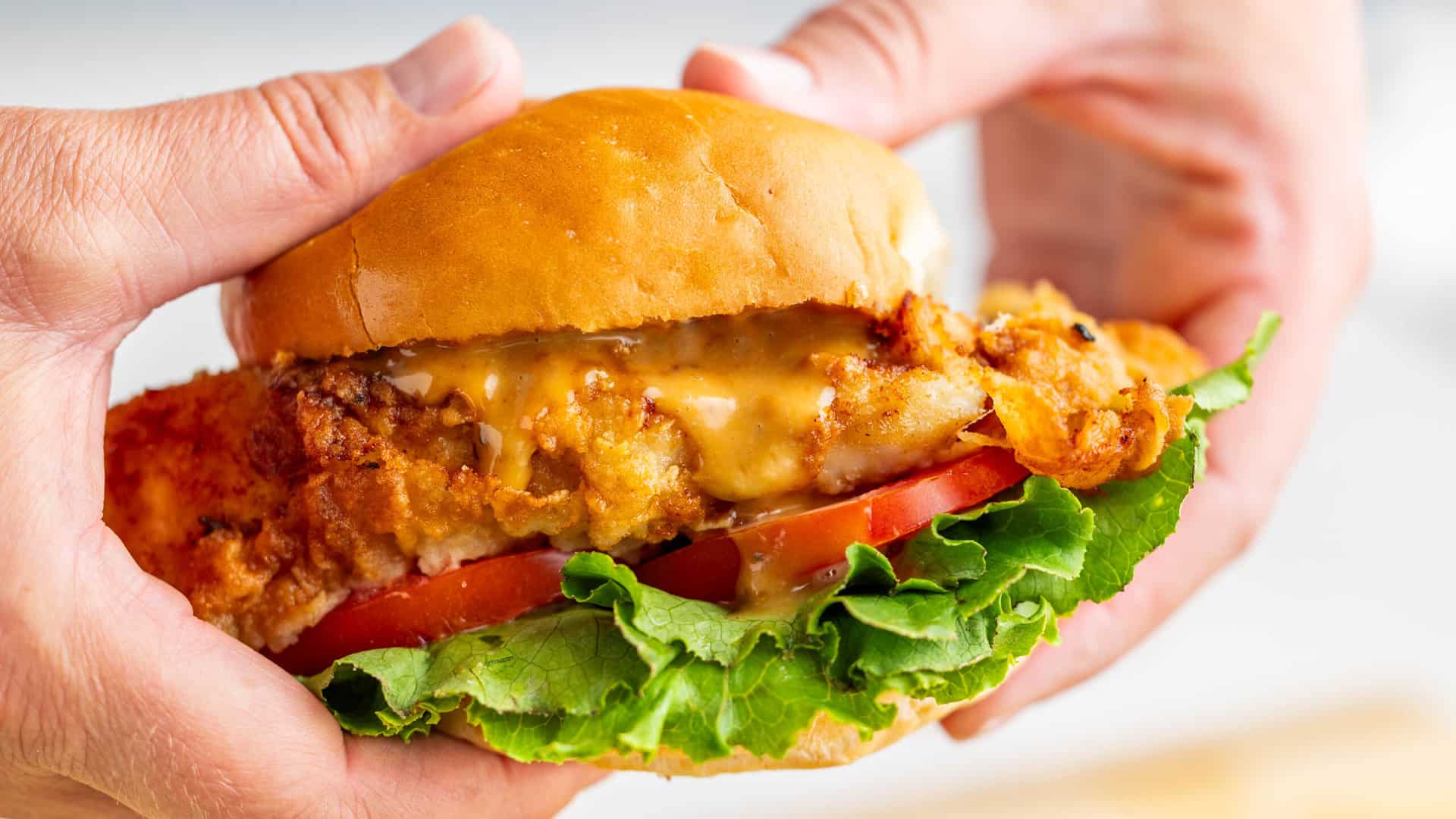You’ll typically discover me effusing about (one among) my favourite elements of a sourdough loaf: a skinny and brittle crust. I’ve persistently strived for it since I began baking. For me, the textural distinction between a crisp crust’s snap and the tender, melt-in-your-mouth crumb is my hallmark for nice sourdough bread.
Don’t get me unsuitable; there’s a place for thick-crusted bread, too (I like Italian-style bread such as you’ll discover in Altamura that has a brilliant crunchy crust). And once I say skinny crust, I’m not speaking about pale loaves which are underbaked to sidestep a thicker outcome. The Maillard response will at all times lend a well-baked crust a full bouquet of caramelization and malty notes. There are different levers to drag when planning your bake to make sure a skinny and crisp, but fully-baked, loaf.
Creating thin-crusted bread shouldn’t be at all times simple, particularly for a house baker who lacks knowledgeable deck oven with steam injection on the press of a button. However fret not—it is doable to get a properly brittle crust at dwelling, and this information is right here to assist.
Actual Fast: Key Methods for Getting a Thinner Crust
The next checklist of issues could be achieved in isolation or mixed to better impact:
- Extra steam, for longer, firstly of baking
- Bake for much less time at a barely greater temperature
- Guarantee dough is proofed sufficiently
- Bake dough with out chilly proofing (retardation)
We’ll have a look at every of those intimately, however first, let’s outline precisely what we’re on the lookout for with thin-crusted sourdough bread.
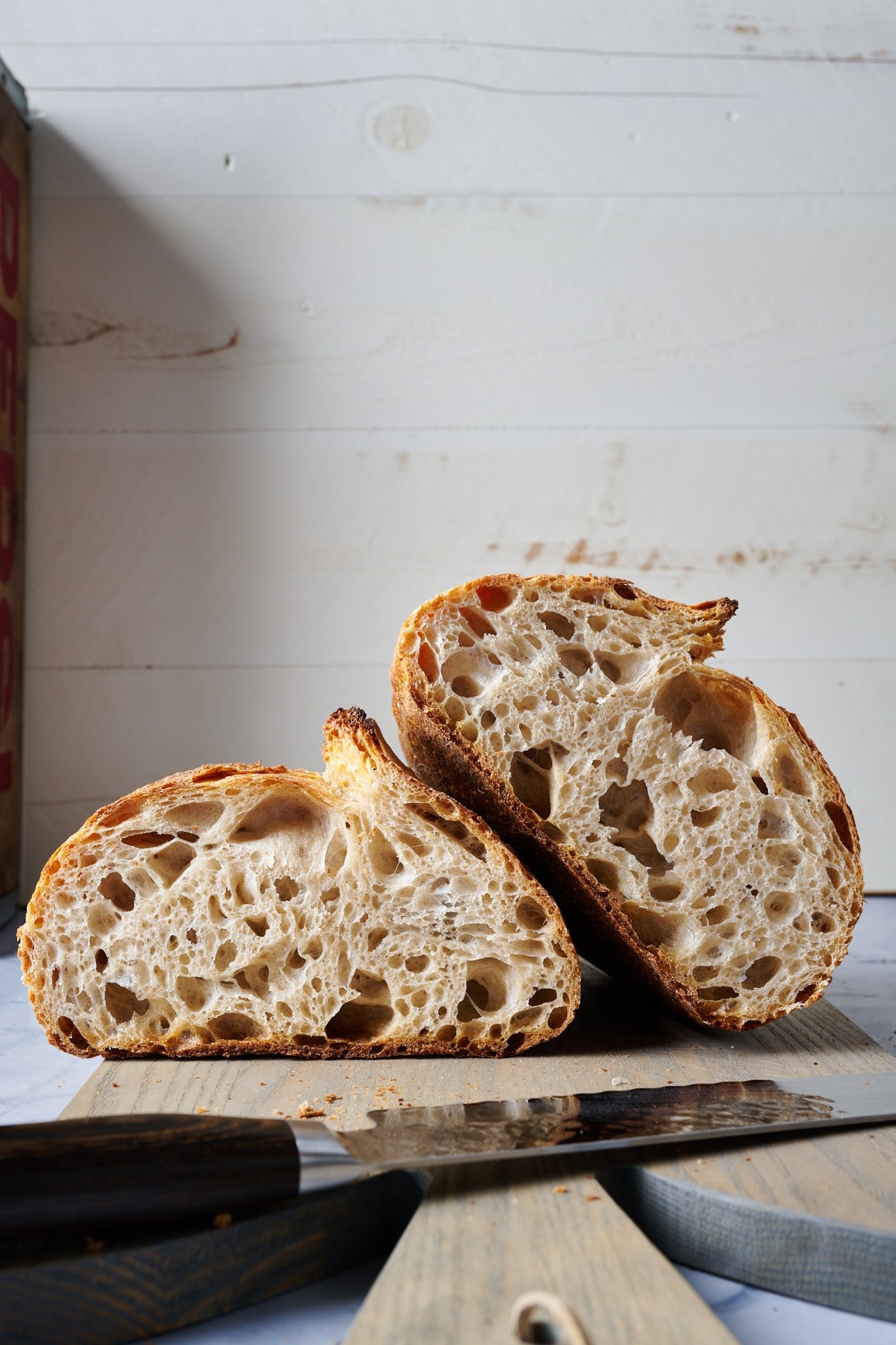

Baking and Crust Thickness Terminology
Similar to once we style bread, the next vocabulary will assist us categorical what we’re on the lookout for once we bake bread.
- Thick vs Skinny Crust: For me, a thick crust is something thicker than about ¼ inch.
- Crispy Crust: A crispy crust is the alternative of a tough crust; it simply shatters into many small items, often in a collection of snaps.
- Crunchy Crust: A crunchy crust wants medium power to interrupt into bigger items, often doing so in a crunch.
- Arduous Crust: Arduous crusts require quite a lot of power to interrupt; after they do, they break into giant items, often in a single crack.
- Venting: This isn’t if you’re complaining in regards to the inventory market. Once you open the oven to let steam escape whereas baking (baking in a dry atmosphere), you may have vented the oven. When you’re baking in a Dutch oven or in any other case utilizing a canopy, that is if you’re baking with out the lid on.
Why Is the Crust On My Sourdough Bread So Thick?
Bread crust thickness is proportional to the bake time: the longer the dough bakes within the oven, and the extra water subsequently baked out of it, the thicker the crust. Moreover, dough that’s cold-proofed (retarded) within the fridge, has very low hydration, or is underproofed may even have a barely thicker crust.
The next contribute to a thicker bread crust:
- Longer bake time
- Diminished steam (or no steam) within the oven when baking
- Chilly-proofing (retarding)
- Underproofed dough
- Diminished hydration
We will’t talk about bread thickness with out first discussing a important element of baking: steam within the oven firstly of baking.
How Does Steam Have an effect on Crust Thickness?
Steaming the oven when baking bread helps preserve the outer layer of the dough moist, tender, and pliable. This delay in hardening permits the loaf to rise optimally within the oven and helps forestall the crust from changing into overly thick by the tip of baking. Primarily, steam within the oven delays crust formation whereas nonetheless permitting the inside of the dough to bake.
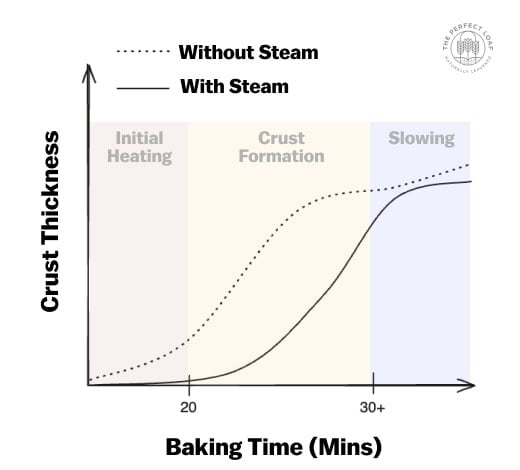

Within the diagram above, you’ll be able to see three distinct phases of a bake:
- Preliminary section: In the course of the first baking stage because the dough begins to warmth, crust hardening is delayed if the oven has steam (often 20 minutes). If the oven doesn’t have steam, crust hardening begins.
- Crust formation section: After the oven is vented of steam, crust hardening begins quickly. In a dry oven, the crust continues to harden and thicken.
- Slowing section: Close to the tip of baking, the crust begins to insulate deeper areas of the dough, thereby slowing crust formation. When the bread is completed baking, the dough baked with steam may have a thinner crust (assuming all else is equal).
Since steam helps preserve the crust moist, delaying its hardening and setting, you’ll typically see that bread baked in a wood-fired oven has a duller, thicker, and more durable crust.
Now that we’ve decided that steam is nice when baking bread, let’s mix all the weather to create a loaf with a skinny crust.
Find out how to Get Skinny Crust On Sourdough Bread
The next are my go-to methods for guaranteeing my bread has a skinny crust.
1. Extra Steam on the Starting of Baking
Usually, when your bread has an excessively thick crust, the very first thing to think about is that if there was an absence of steam within the oven in the course of the preliminary baking. We’ve discovered that the longer the dough is baked vented (in a dry oven), the thicker the crust.
When Baking Open (On a Floor)
Including a bit extra steam when baking dough uncovered instantly on a baking floor (like a baking metal or baking stone) is a superb manner to make sure your bread has a thinner crust.
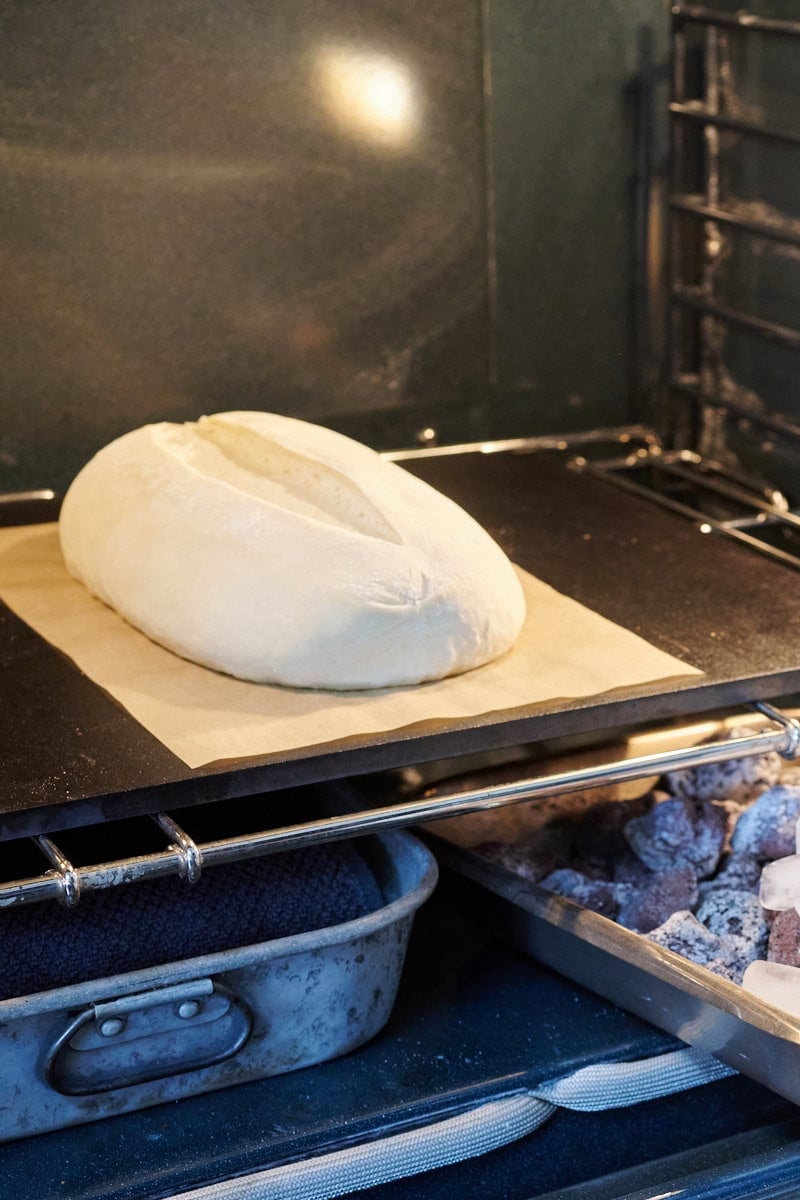

When you comply with my method for steaming a house oven and discover the crust remains to be thick, add one other cup of ice to the recent roasting pan 5 minutes into the bake. This extra blast of steam will guarantee loads of moisture saturation on the dough’s exterior floor, maintaining it skinny and tender for longer.
Moreover, you’ll be able to wait to vent the oven of this steam till 30 or 35 minutes into the bake as a substitute of the standard 20 minutes, as mentioned beneath.
When Baking Coated (with a Dutch Oven or Baking Shell)
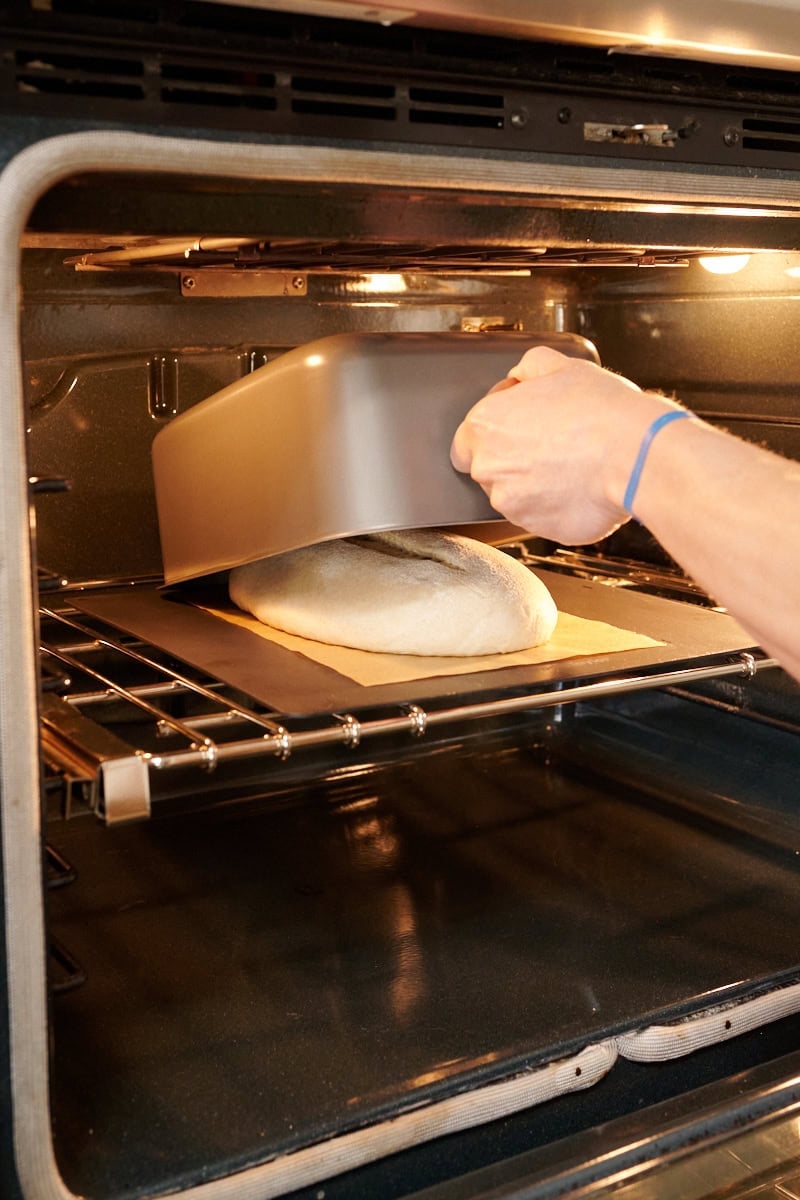

In case your dough is roofed, as it will be in a Dutch oven or utilizing a Baking Shell, the standard length for overlaying is the primary 20 minutes of baking. As a substitute, lengthen this time to 30 and even 35 minutes. This may steam the dough for longer.
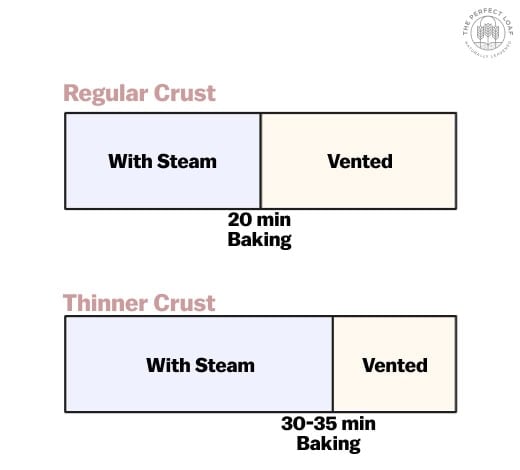

Moreover, a bit trick I like to make use of, particularly with a Dutch oven, is to position a single ice dice into the Dutch oven earlier than shortly overlaying the dough. This extra burst of steam is fairly dramatic since all of it is going to be trapped contained in the pot throughout baking.
2. Bake For Much less Time (At a Larger Temp)
The longer bread is baked within the oven, the extra time it has to dry on the outside, thus the thicker the crust. Although it could appear considerably counterintuitive, you’ll get a thinner crust in case you bake barely hotter and for a shorter time (in case you strictly bake at a warmer temp, you’ll truly get a thicker crust).
As an illustration, in case you commonly bake at 450°F (230°C) for 50 minutes (which I like to recommend in my Newbie’s Sourdough bread), however your crust is thick and exhausting, attempt baking at 475°F for half-hour.
The catch right here is that you need to guarantee the inside temperature reaches round 204°F (95°C) (or the temperature listed in any recipe) by the point the outside is absolutely coloured. So, you’ll need to discover a stability between baking sizzling and quick whereas nonetheless baking the dough totally.
A fantastic instance of a protracted bake time yielding a thicker crust could be a sourdough miche. As a result of dimension of those loaves (the one beneath was 2 kilograms) they require over an hour to bake. This longer bake time ends in a thicker, crustier crust (which is predicted and desired for this fashion of bread).
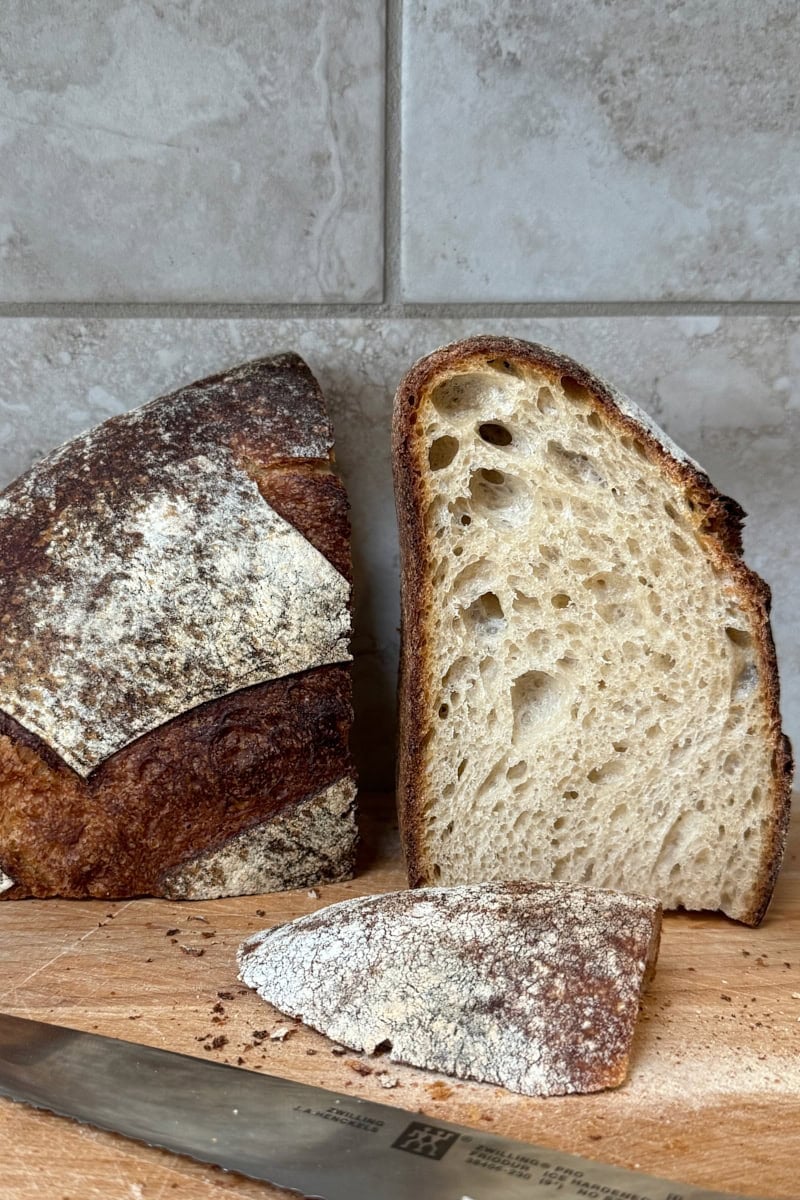

3. Guarantee Dough is Totally Proofed
Underproofed dough will bake right into a gummy loaf with a super-thick, exhausting crust. A part of what makes a crust skinny is the dough’s fermentation degree. Correctly fermented dough incorporates plenty of little bubbles all through, and these little bubbles (and the open “house” contained in them) lighten the dough. Because the crust units, these bubbles are fastened (see the layers within the picture beneath). A dough with few bubbles—underproofed dough—can be denser and fewer ethereal than a sufficiently proofed dough.
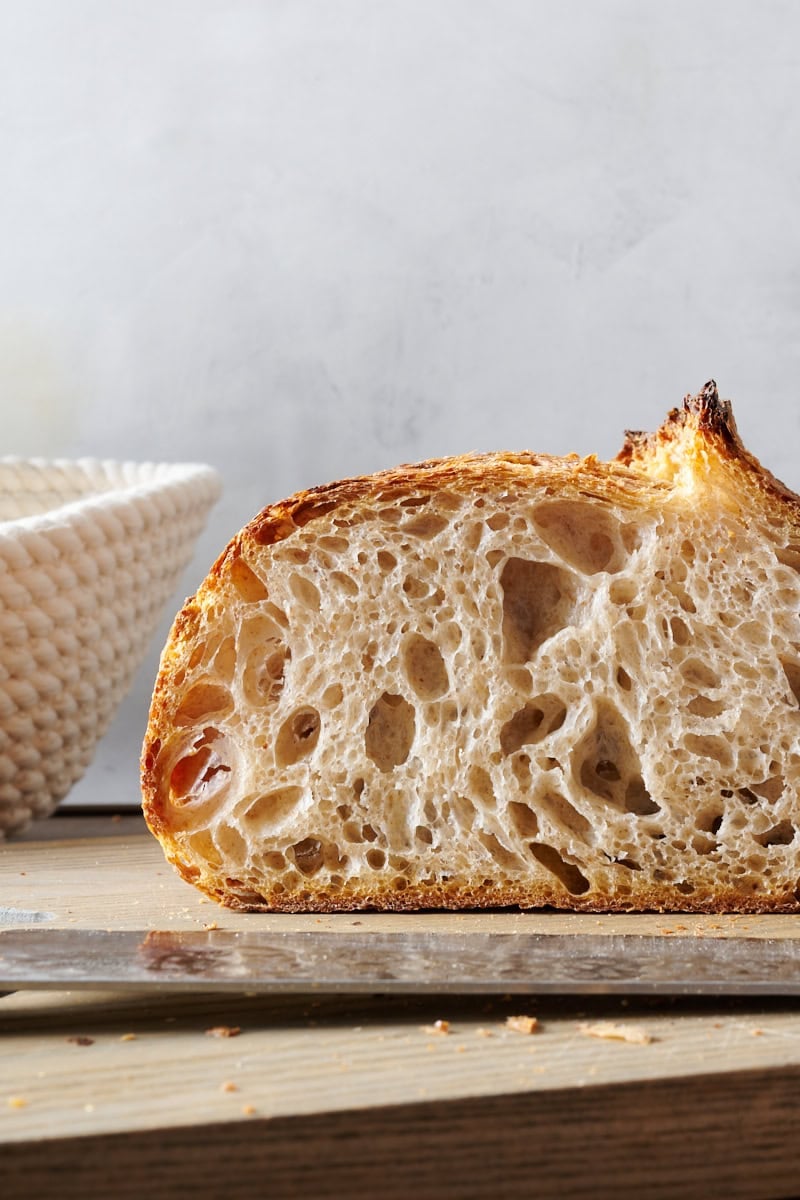

That is much like how pie crust bakes. The butter that takes up house within the dough melts, and the water within the butter evaporates within the oven, abandoning house that makes the dough flakey.
A dough with few bubbles—underproofed dough—can be denser and fewer ethereal than a sufficiently proofed dough.
4. Bake Dough With out Chilly Proofing (Retardation)
Dough proofed in form in a fridge or retarder may have a thicker crust than bread baked the identical day it’s combined (direct dough). It’s because the outer floor of the dough will dry when it’s within the fridge in the course of the lengthy proof. As we beforehand discovered, extreme drying on the outside of the dough will end in a thicker crust throughout baking.
There are good causes to cold-proof your dough–elevated taste, scheduling, and simpler scoring, for instance–however that is one thing to bear in mind in case you’re capturing for the thinnest crust in your sourdough bread.
That is one purpose why, when making sourdough baguettes, I bulk ferment the dough in bulk fermentation (en bac) as a substitute of proofing the dough after shaping.
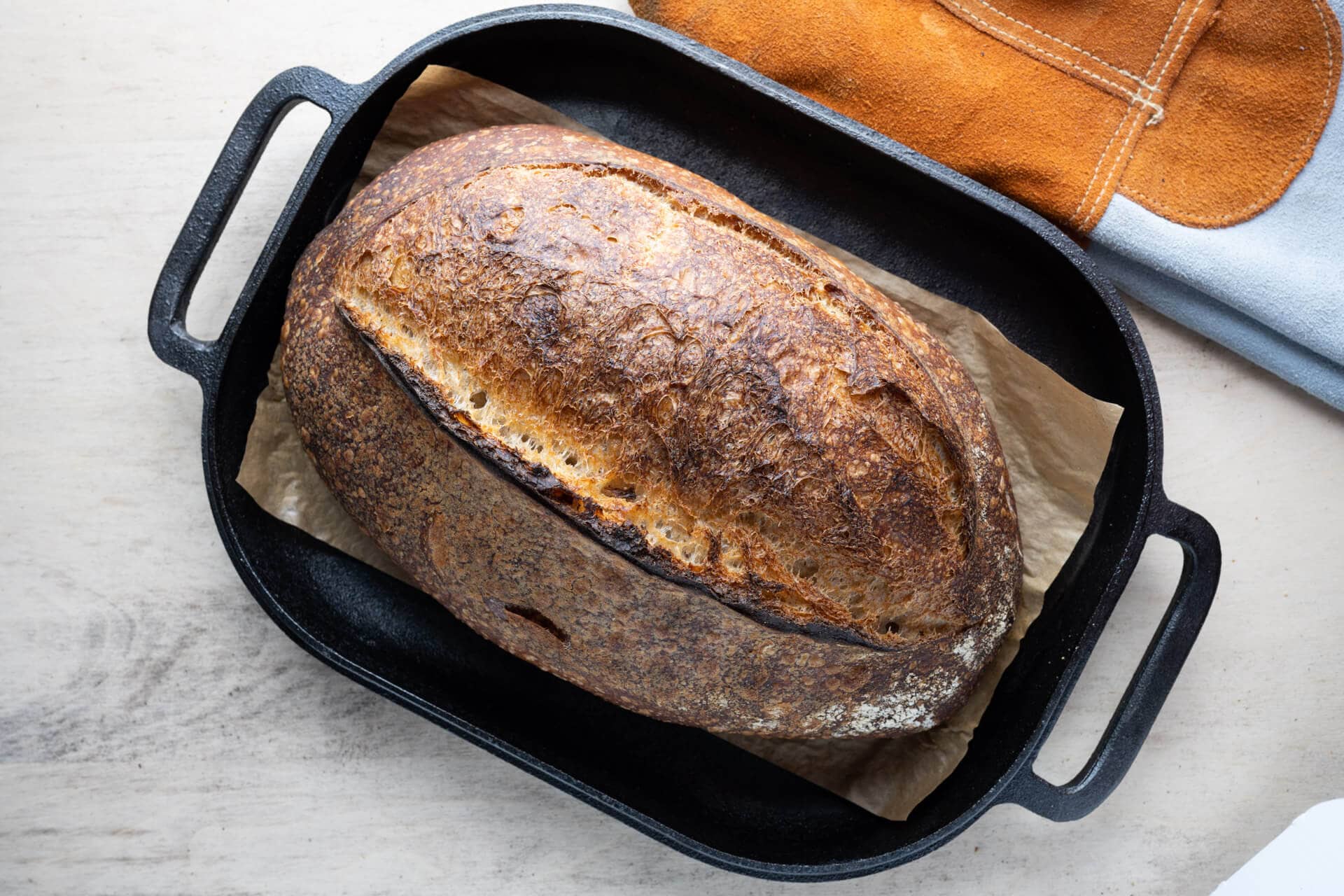

Does Baking in a Dutch Oven Give Bread a Thick Crust?
Sure, I’ve usually discovered that baking in a Dutch oven typically provides bread a thicker crust. That is primarily as a result of warmth retention of forged iron, which exposes the dough to very excessive temperatures for extended durations.
To keep away from this, after the dough has set (often after about half-hour into baking, with 10 of these uncovered), gently and thoroughly tip the loaf out of the Dutch oven to complete baking on the oven rack.
See my information on Dutch oven baking for extra methods for avoiding a thick crust.
How Does Crust Thickness Forestall It From Going Stale?
On my latest The Good Loaf journey to Altamura, Italy, we noticed (and tasted!) firsthand the well-known bread made within the space. One among its hallmarks is its maintaining high quality: they declare it retains for weeks. The bakers there talked in regards to the thick bread crust and the way this, together with sourdough fermentation, helped the bread keep contemporary for an exceptionally very long time.
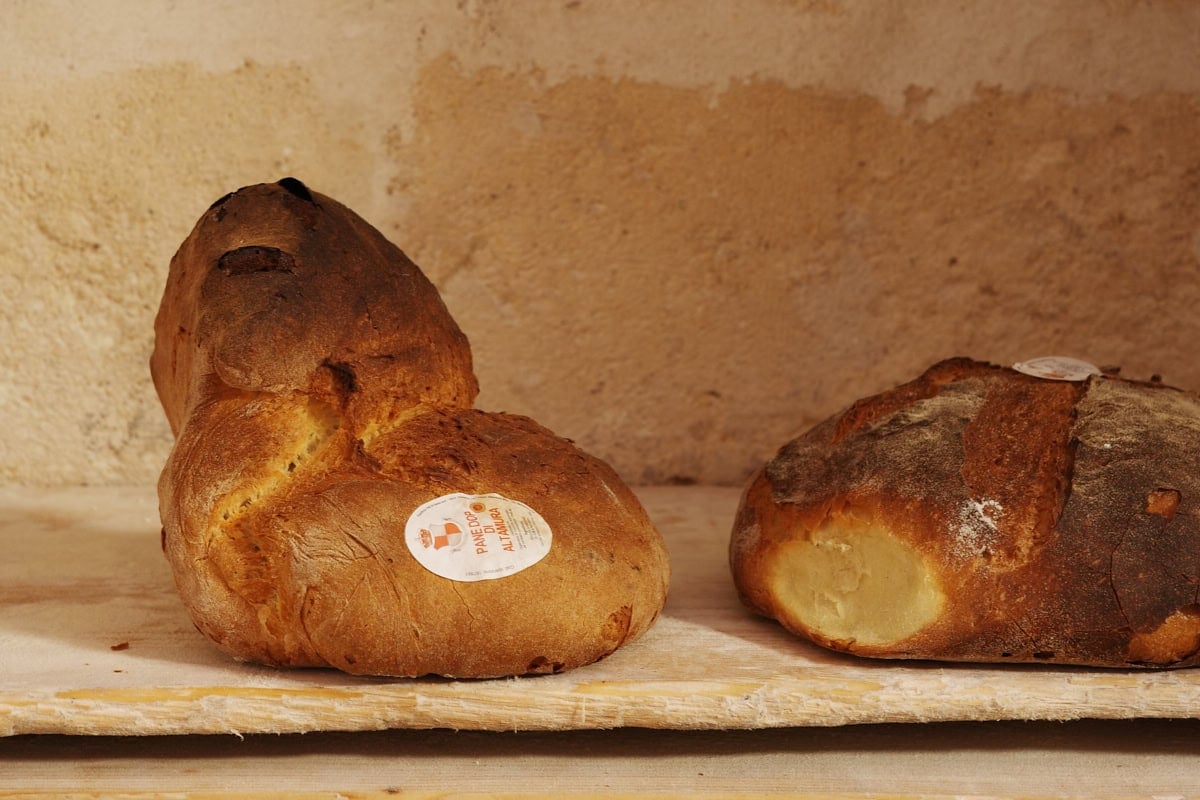

So, there’s a tradeoff right here between crust thickness and preservation. A skinny-crusted sourdough bread will nonetheless preserve properly, however much less so than a loaf with a thicker crust.
Substances For a Skinny and Tender Bread Crust
One ultimate piece of this puzzle is doughs containing enrichments like oil, butter (or any dairy), sugar, and eggs. These additions contribute to crust (and crumb) softness as a result of they intervene with gluten improvement, which prevents an excessively powerful dough, they usually retain moisture, which retains the dough tender.
We will see the impact of those enrichments firsthand when working with dough like sourdough cinnamon rolls, which have eggs, sugar, and butter added for softness—and boy, are they tender.
Nevertheless, these enrichments have much less impact on the crust thickness than the opposite components mentioned above: warmth penetration, moisture migration (drying), and time uncovered to warmth within the oven.
Skinny Crust Bread With the Pullman Pan
Utilizing a Pullman pan—a pan with a slide-on lid—ensures the dough baked inside may have a skinny crust on all sides of the loaf. The lid traps steam inside and insulates the dough from being uncovered on to the oven’s warmth, thereby lowering drying. As we’ve simply discovered, much less drying on the outside of the baking dough ends in a thinner crust.
You possibly can see the consequences of utilizing a Pullman pan in my sourdough Ache de Mie.
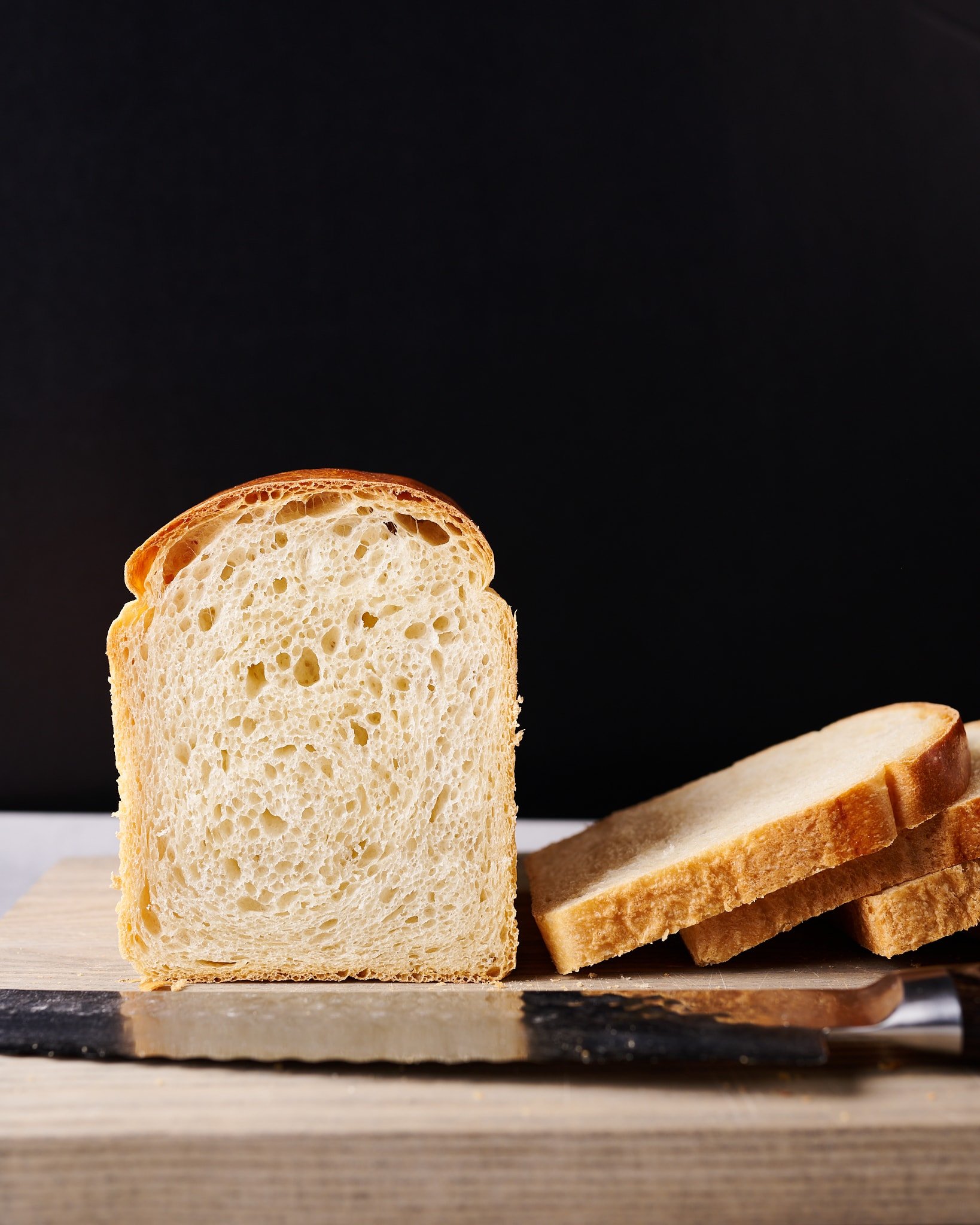

Skinny Crust Bread FAQs
Does excessive protein flour make bread crust thick?
Utilizing high-protein white flour in a bread dough received’t essentially make for a thick-crusted loaf of bread. Nevertheless, I discover that it may make the crust a contact more durable and, relying on how a lot of this flour is used, barely rubbery in texture—particularly if the dough isn’t sufficiently hydrated.
Can I bake thin-crusted bread in a gasoline oven?
Since gasoline ovens have extra vents and ports that leak steam than an electrical oven, it’s more difficult to bake thin-crusted loaves in them if you’re baking dough uncovered on a floor. When baking bread in a gasoline oven, I like to recommend utilizing a Dutch oven or a Baking Shell so that you could entice steam. Nevertheless, utilizing a Dutch oven often ends in bread with a barely thicker crust as a result of warmth retention properties of forged iron.
Does sourdough bread at all times have a thick crust?
No, not essentially. If sourdough bread is baked for a shorter interval with loads of steam, it may have a really skinny, brittle crust.
What’s Subsequent?
Any sourdough bread could be adjusted to have a thinner or thicker crust. By specializing in baking for a shorter time (doubtlessly a warmer temperature), introducing extra steam throughout baking, and some different choices, we are able to shift towards a thinner crust that’s simpler to chop.
Utilizing these methods, attempt your hand at my Weekday Sourdough Bread for a thin-crusted and straightforward loaf!
Or, for extra on baking, from steaming to pans to scoring, see my Final Information to Baking Sourdough Bread.
👇Observe extra 👇
👉 bdphone.com
👉 ultraactivation.com
👉 trainingreferral.com
👉 shaplafood.com
👉 bangladeshi.help
👉 www.forexdhaka.com
👉 uncommunication.com
👉 ultra-sim.com
👉 forexdhaka.com
👉 ultrafxfund.com
👉 ultractivation.com
👉 bdphoneonline.com







